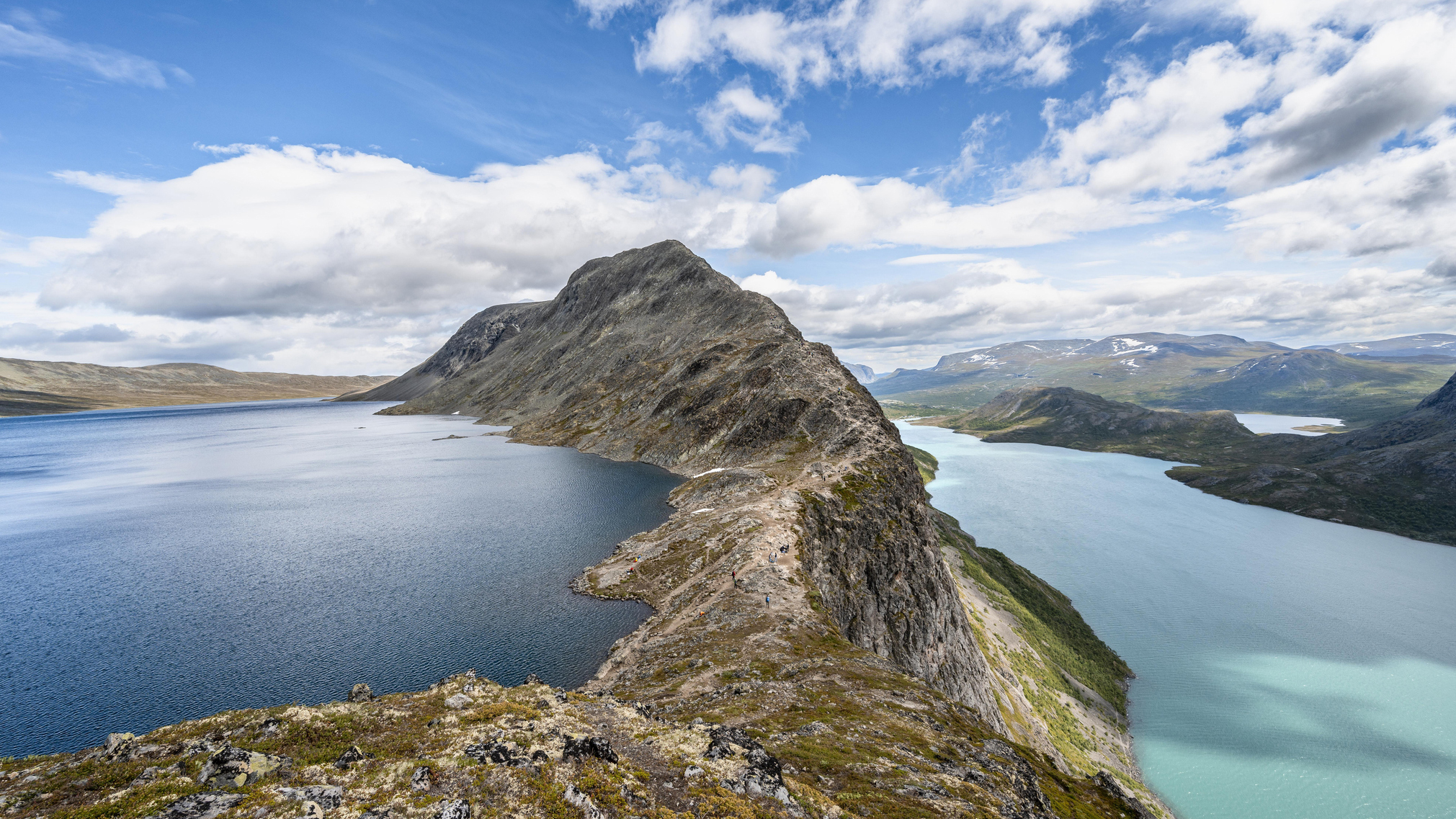The best approach shoes: for alpine adventures, via ferrata, scrambling, and more
The best approach shoes bridge the gap between climbing and hiking shoes, allowing hikers to get a little bolder and climbers to save their tightest shoes for the hardest routes
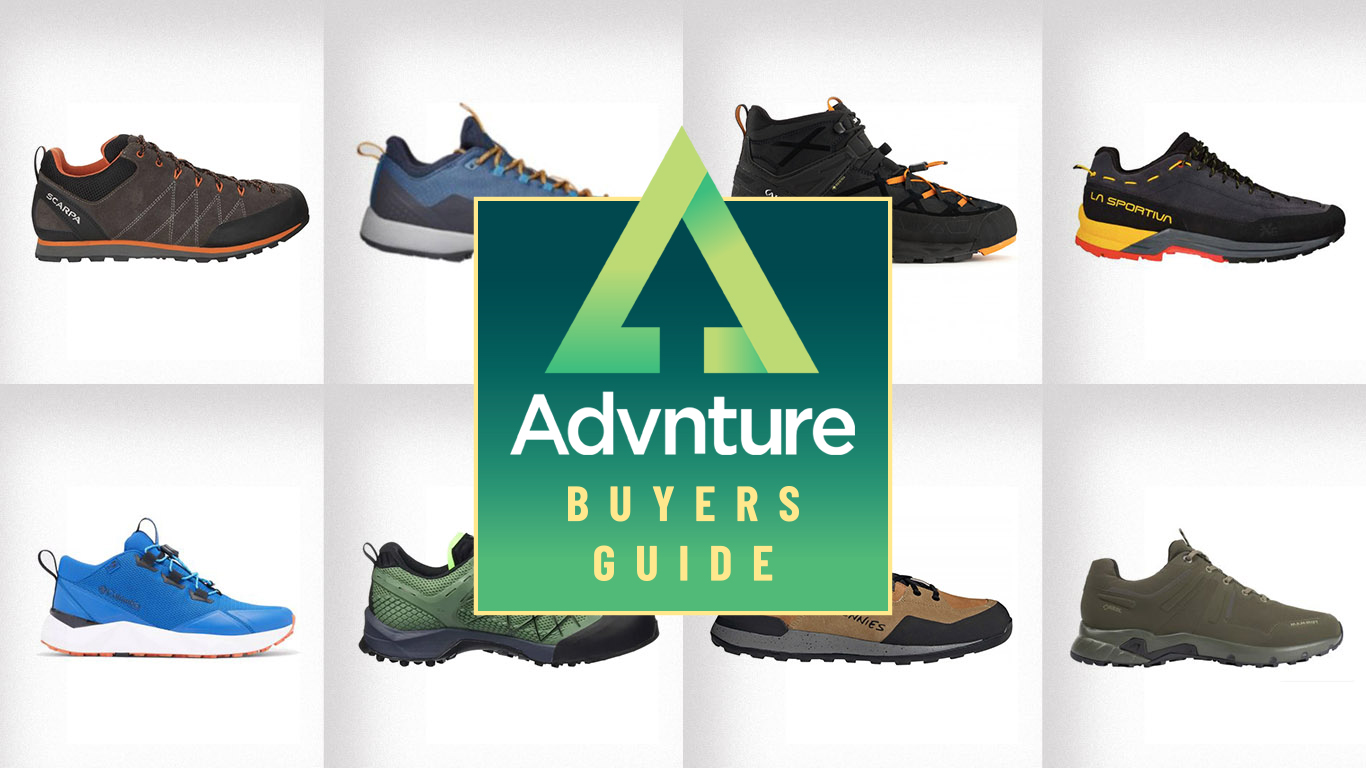
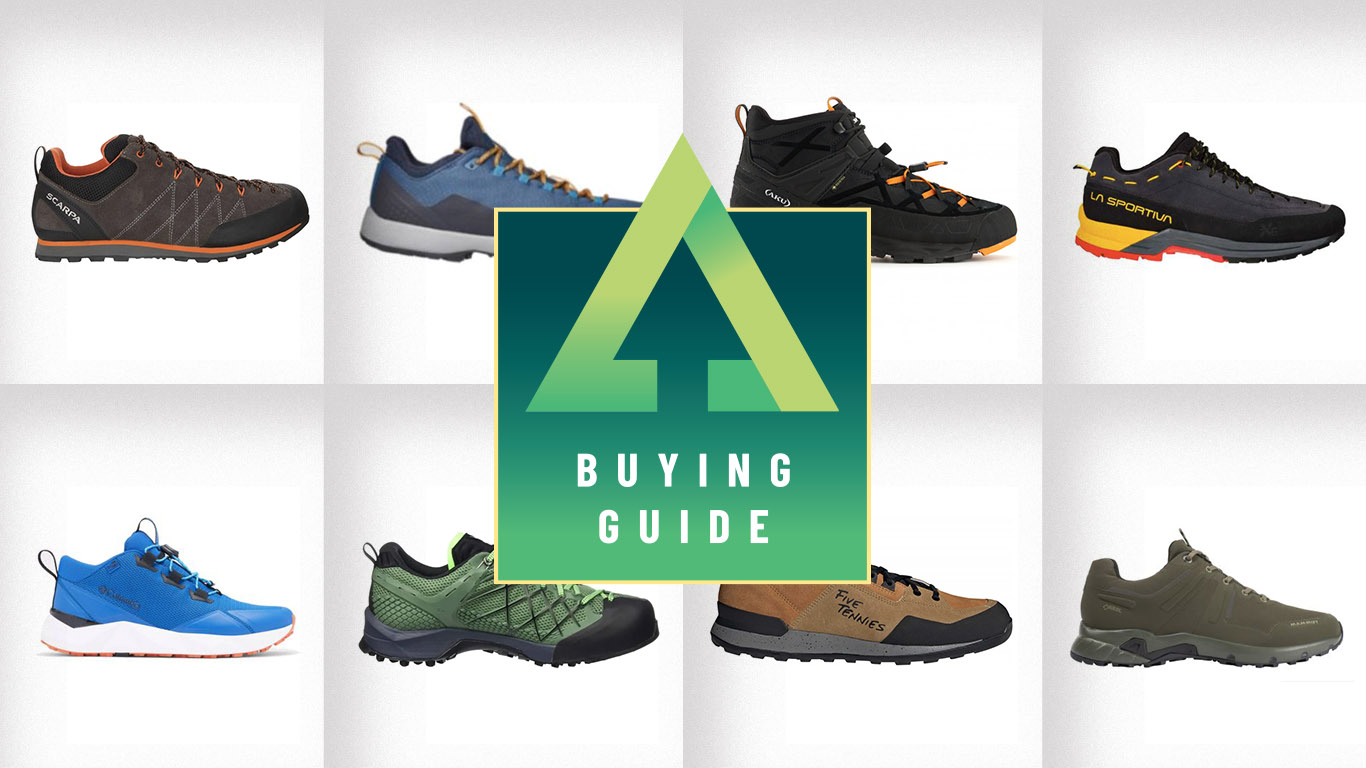
1. The quick list ↴
2. Best all rounder
3. Best alpine shoe
4. Best lightweight shoe
5. Best for technical scrambling
6. Best high performance shoe
7. Best for breathability
8. Best for grip
9. Best for protection
10. Best for dry conditions
The best approach shoes have emerged from the desire adventurers have to cut down on baggage, but still benefit from technical kit. They are most at home in the often scrambly zone between climbing and hiking, where the former may be overkill but you'd find the latter lacking in grip and precision.
The modern approach shoe takes technical to the next level, with features that might include sticky rubber outsoles and dual lacing systems for different terrains. The style evolved out of climbing shoes, with designs that allowed rock climbers to tackle technical approaches without wearing a pair of many sizes too small climbing shoes when it wasn't strictly necessary.
They were soon adopted by hikers too, who set aside their hiking boots to take to take a bolder approach to rocky scrambles and via ferrata, thanks to the way approach shoes are adapted for maximum traction on rock.
The best approach shoes are today the natural selection for anyone who enjoys technical trails. There's great variation within them, with some approach shoes featuring the protective adaptations of the best hiking shoes, while other sub-species are more closely related to the climbing shoe.
Meet the expert
You can trust Advnture

Alex is a freelance adventure writer and mountain leader with an insatiable passion for the mountains. A Cumbrian born and bred, his native English Lake District has a special place in his heart, though he is at least equally happy in North Wales, the Scottish Highlands or the European Alps. Through his hiking, mountaineering, climbing and trail running adventures, Alex aims to inspire others to get outdoors. He is currently President of the London Mountaineering Club, training to become a winter mountain leader, looking to finally finish bagging all the Wainwright fells of the Lake District and hoping to scale more Alpine 4000ers when circumstances allow. Find out more at www.alexfoxfield.com
With contributions from
The quick list
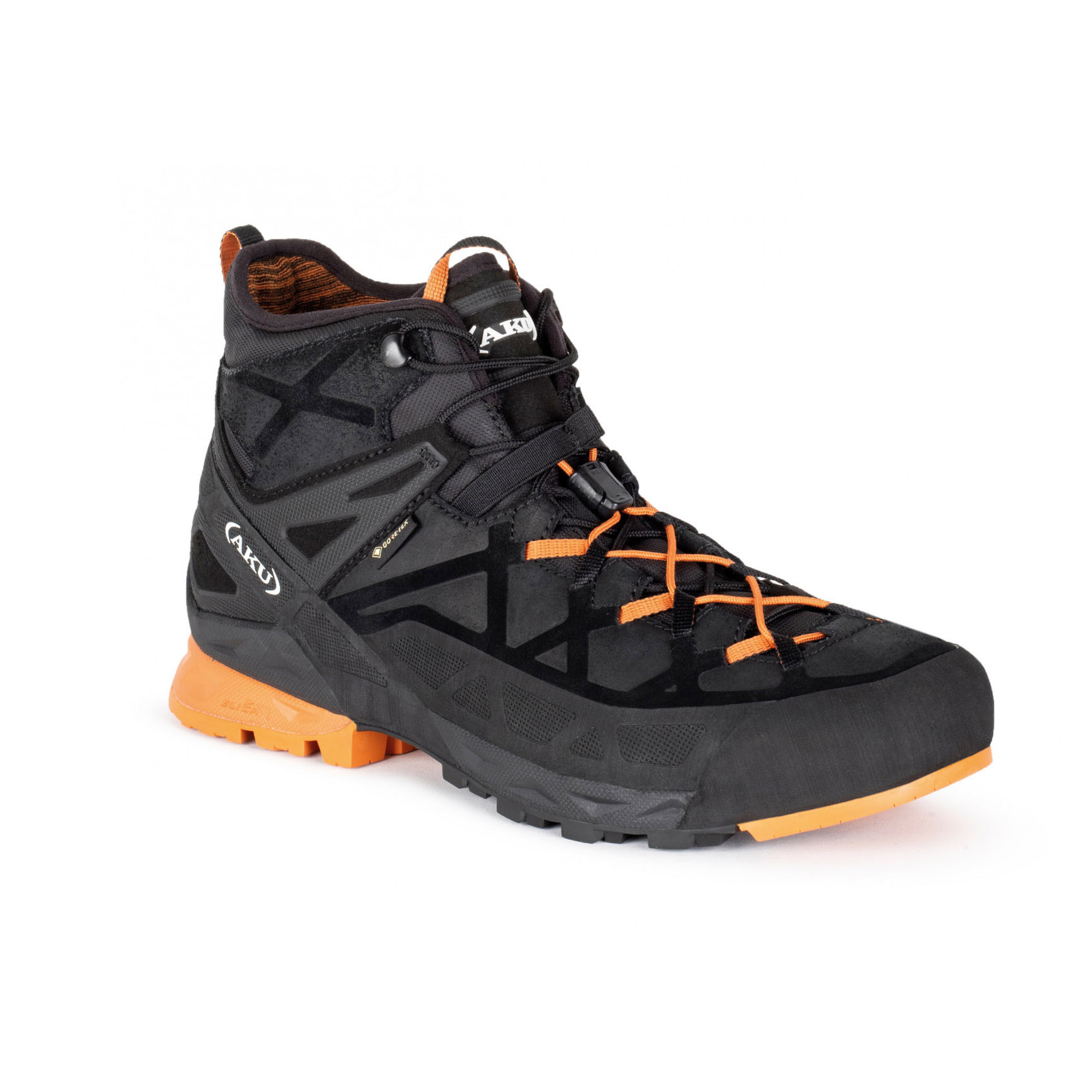
These look very much like hiking shoes, but once you hit true rock there are plenty of features that tick the approach box, including a secondary lacing system that allows you to get a precision fit. We'd wear these hiking, scrambling, on via ferratas and on easy multi-pitch climbs. Recommended
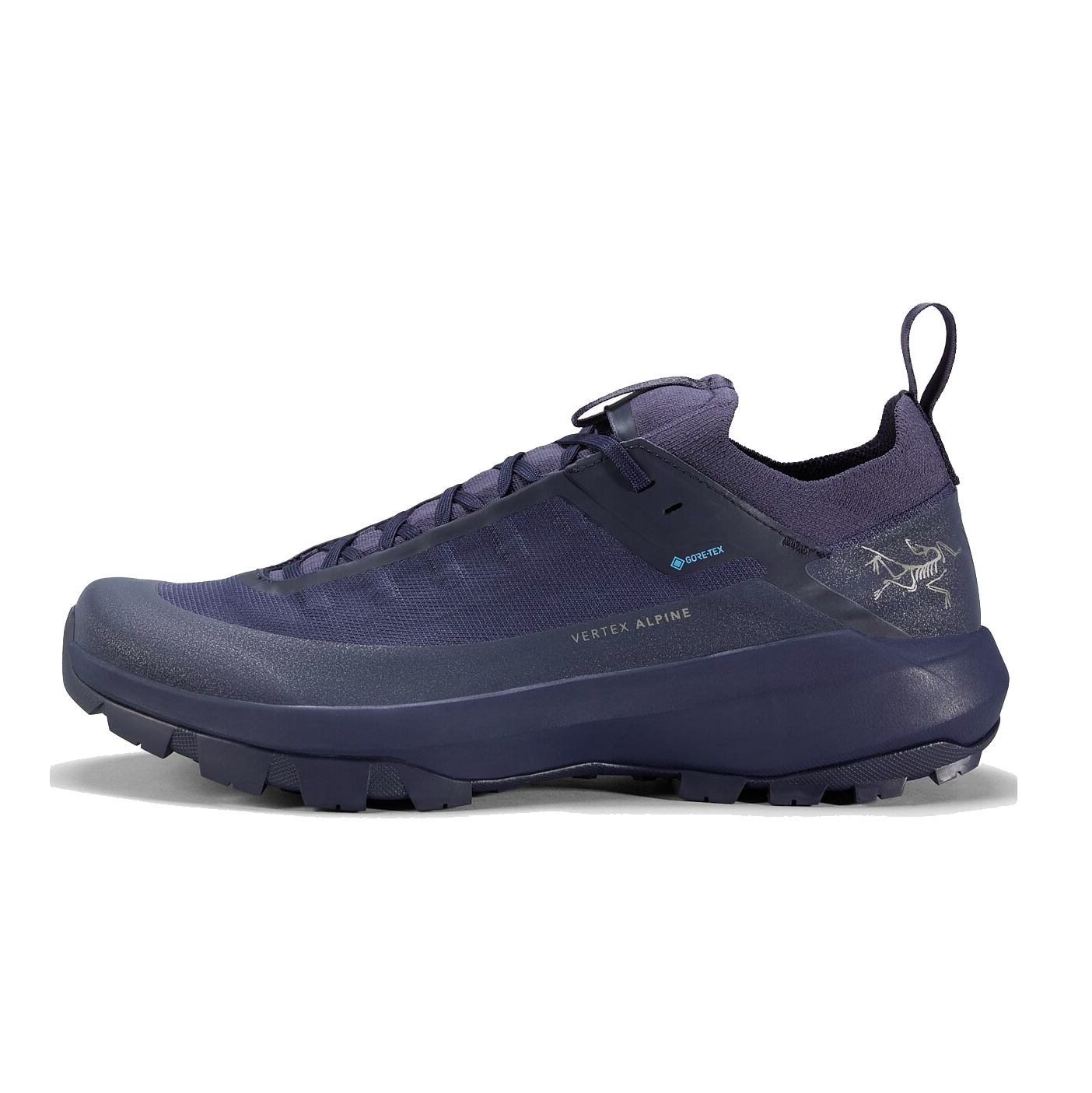
This is a shoe that's as stylish and sleek as it is high-functioning. It's impressively waterproof, and its grip style is perfectly suited to adventures above the tree line. Yes, it's a bit of a fight to get a pair on, but the quality really shows here
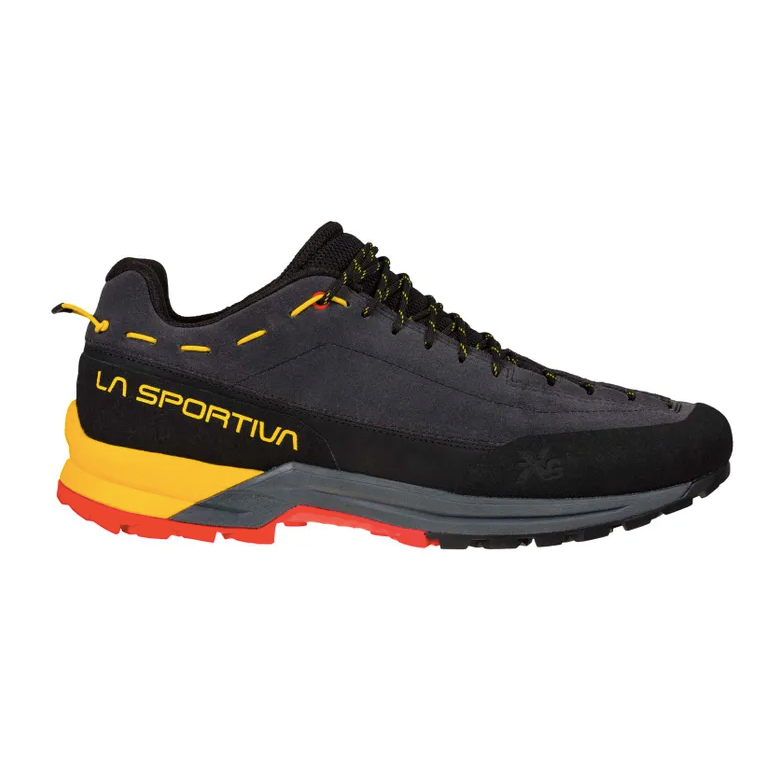
This design leans very much towards a high performance rock climbing shoe, combined with the stiffness of an approach hoof, at an impressively light weight. We like the dual compound Vibram MegaGrip and IdroGrip tread sole, which together provide tonnes of grip
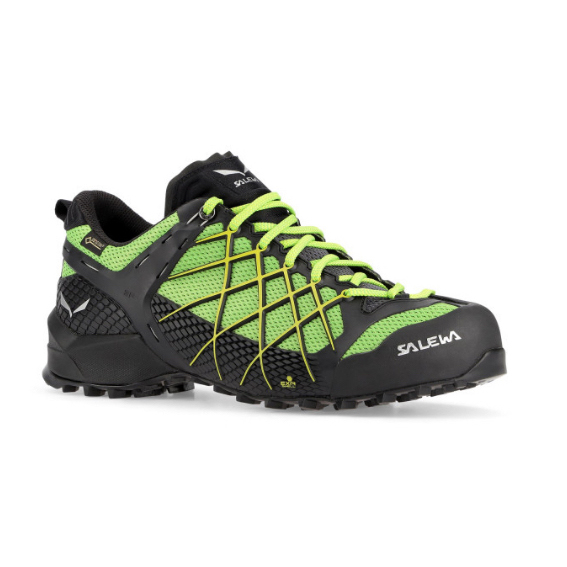
While it's not suited to long, arduous terrain, this is a perfect shoe for technical scrambling approaches and day walks. We like the climbing zone at the toe, which delivers confidence when edging, and the Gore-Tex lining, that provided comfort despite a relatively narrow fit
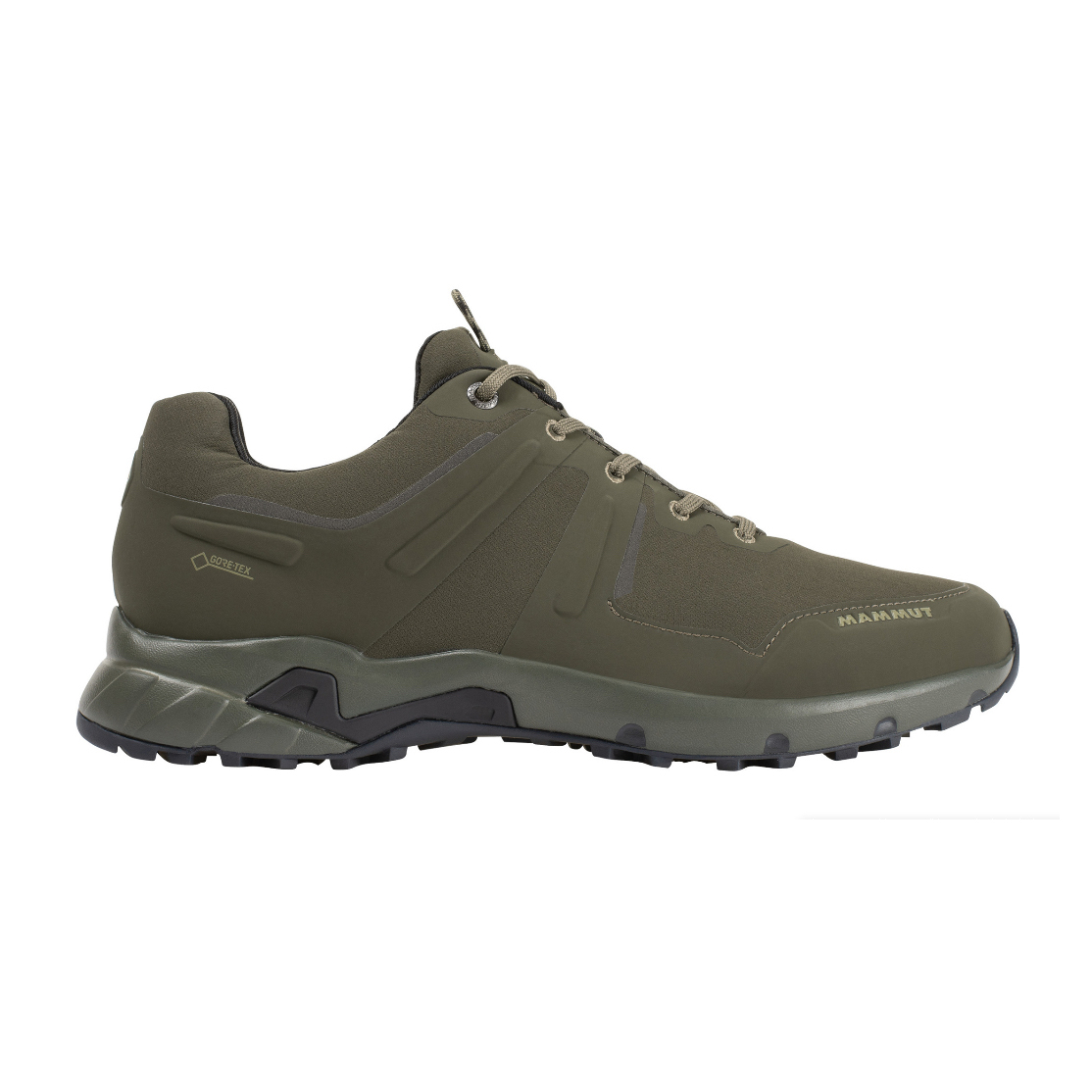
Built for people who don't want to change shoes between activities, with features that work for scrambling across technical terrain, downclimbing and more, while still retaining bags of comfort. Our reviewer approved of the patented sole design that allows the foot to naturally roll, reducing fatigue

The uppers of these shoes are made from the brand's super breathable EnduroKnit fabric, which means you can rely on them for lasting temperature regulation, season after season. We found the innovative lacing system - aimed at evenly distributing pressure - super comfortable and easily adjustable

We reckon the stickiness provided by the Vibram Megagrip outsole on these shoes makes them perfect for technical scrambling. ACTIV impact tech also means these are built for shock absorption over uneven terrain, reducing stress on legs, ankles and feet. Bonus points for being eco friendly too
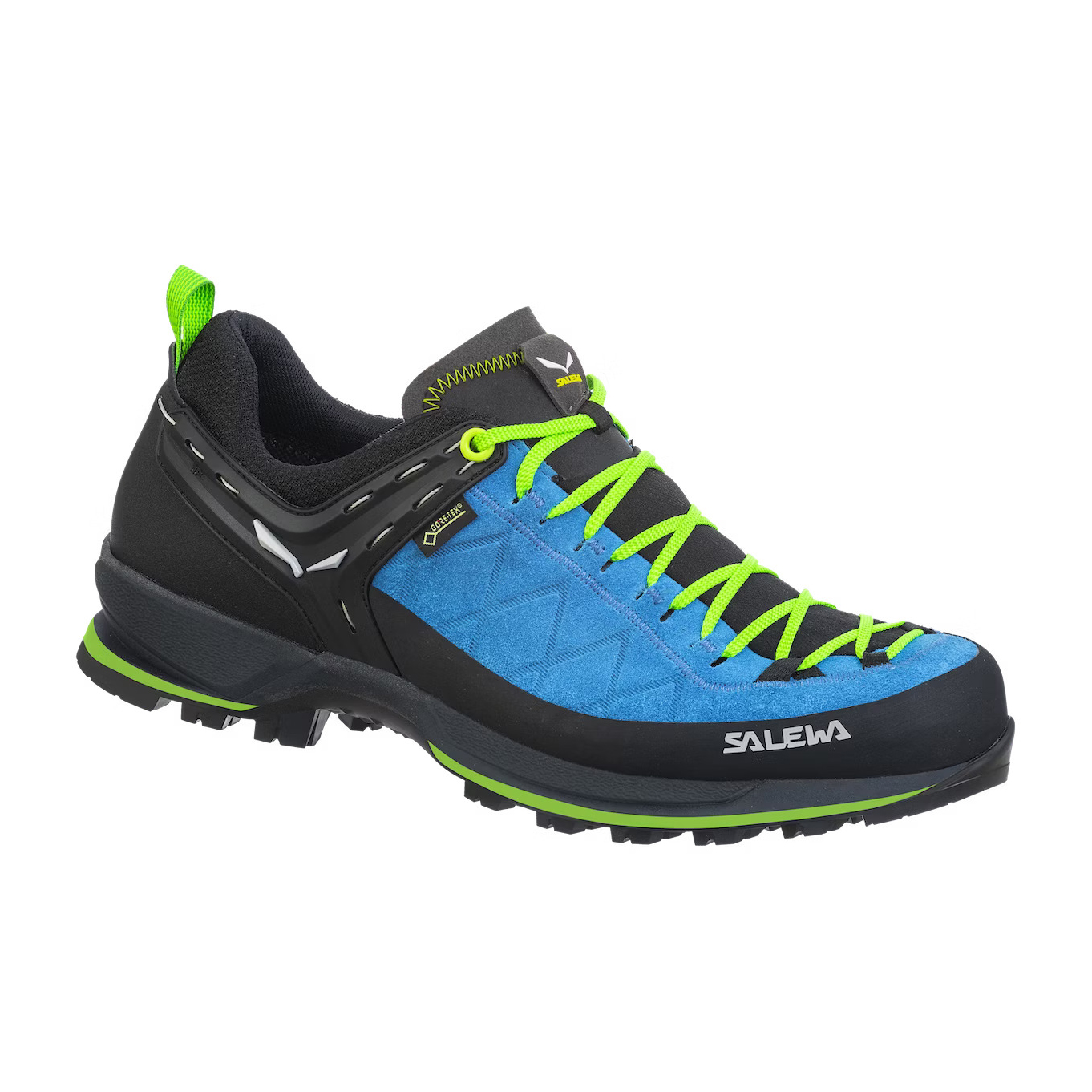
With a full wrap around protective rand and substantial toe cap, we would rely on these for the kind of protection you need when edging around rocks and tackling scrambles. A thin steel cable connects the instep with the sole, offering comprehensive protection, that admittedly means they're heavier than some
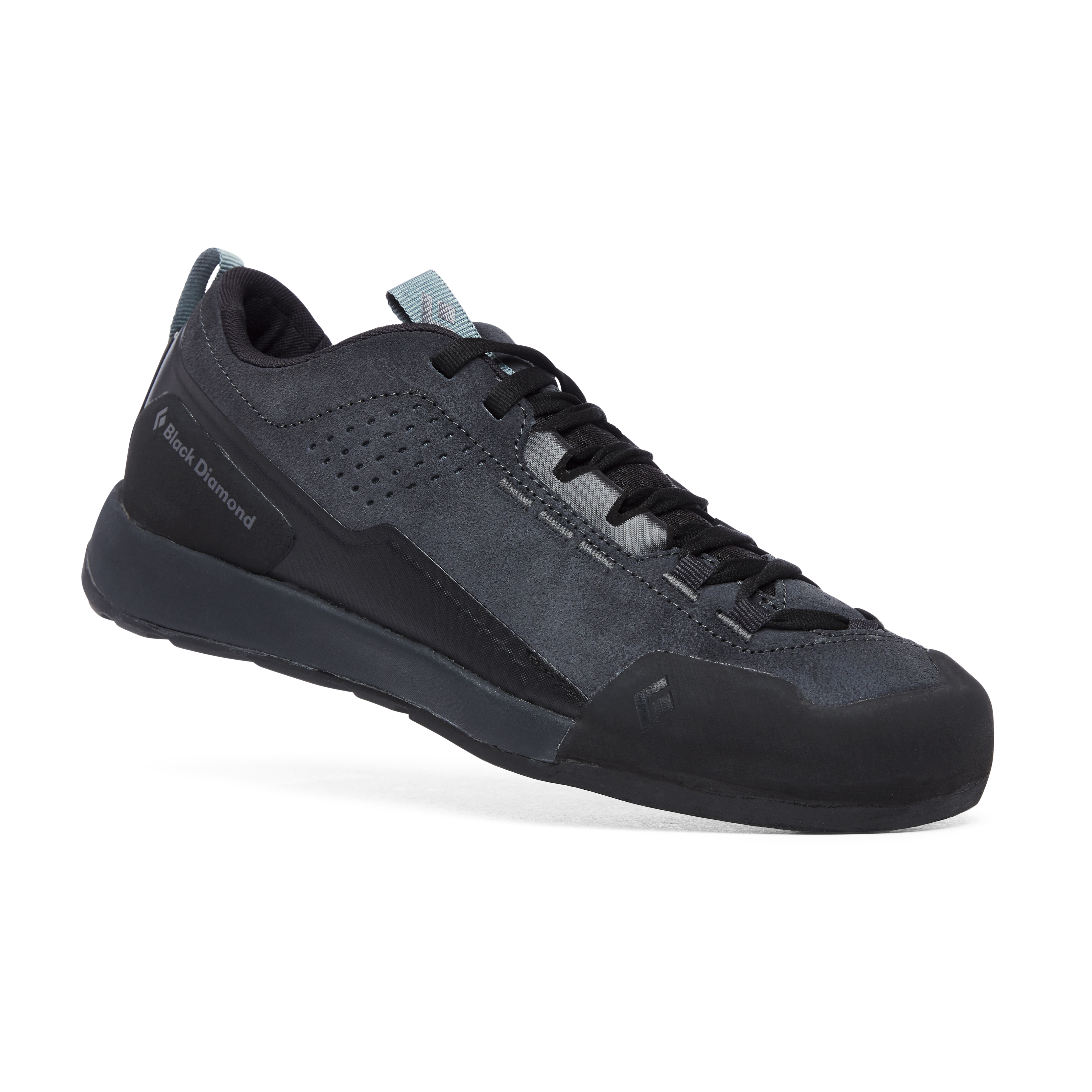
Easily capable of the most gruelling approaches, thanks to their super sticky soles, we found these shoes super comfortable too, with a lightweight half bootie/tongue for a slipper-like feel. The sneaker-like soles aren't the best in wet conditions, so save these for when you know it'll be dry
The best all rounder
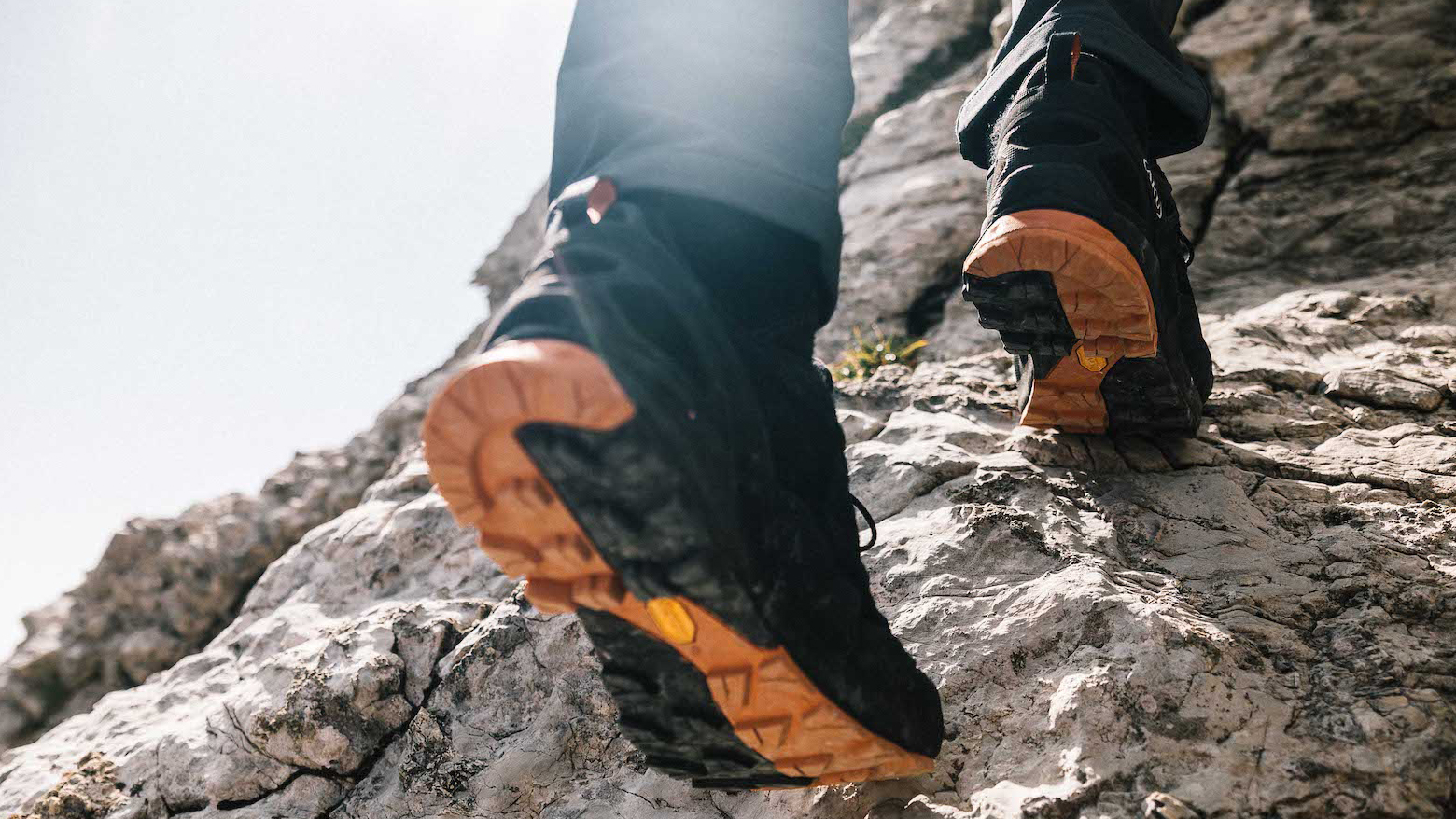
Specifications
Reasons to buy
Reasons to avoid
AKU's Rock DFS GTXs are certainly towards the hiking shoe end of the approach shoe spectrum, complete with a durable Vibram sole, mid ankle height option and waterproofing provided by GORE-TEX. All of this means that they stand up to the rigors of wild, backcountry hiking and long walk ins to the crag.
However, once you hit the rock, there are myriad features that help to elevate what appears to be a premium hiking shoe into the realms of the high-performance approach shoe. The "DFS" in the name stands for Dual Fit System, which is new and exclusive technology and very much the standout USP. Traditional lacing gives you a comfortable fit when walking, while a second fast-lacing system towards the front of the shoe enables you to tighten things up even further for climbing precision once you start to take on rocky scrambles and steeper crags.
All in all, these are the perfect shoes for taking on long, rocky scrambles, via ferratas or easy multi-pitch climbs. At the crag, if swapping out for climbing shoes, they easily attach to a harness thanks to their gear loops. They are also durable and robust enough to act as a full-time hiking shoe, even if you never intend on hitting graded terrain, making a mockery of the approach shoes vs hiking shoes debate.
Read our full AKU Rock DFS GTX review
The best alpine shoe
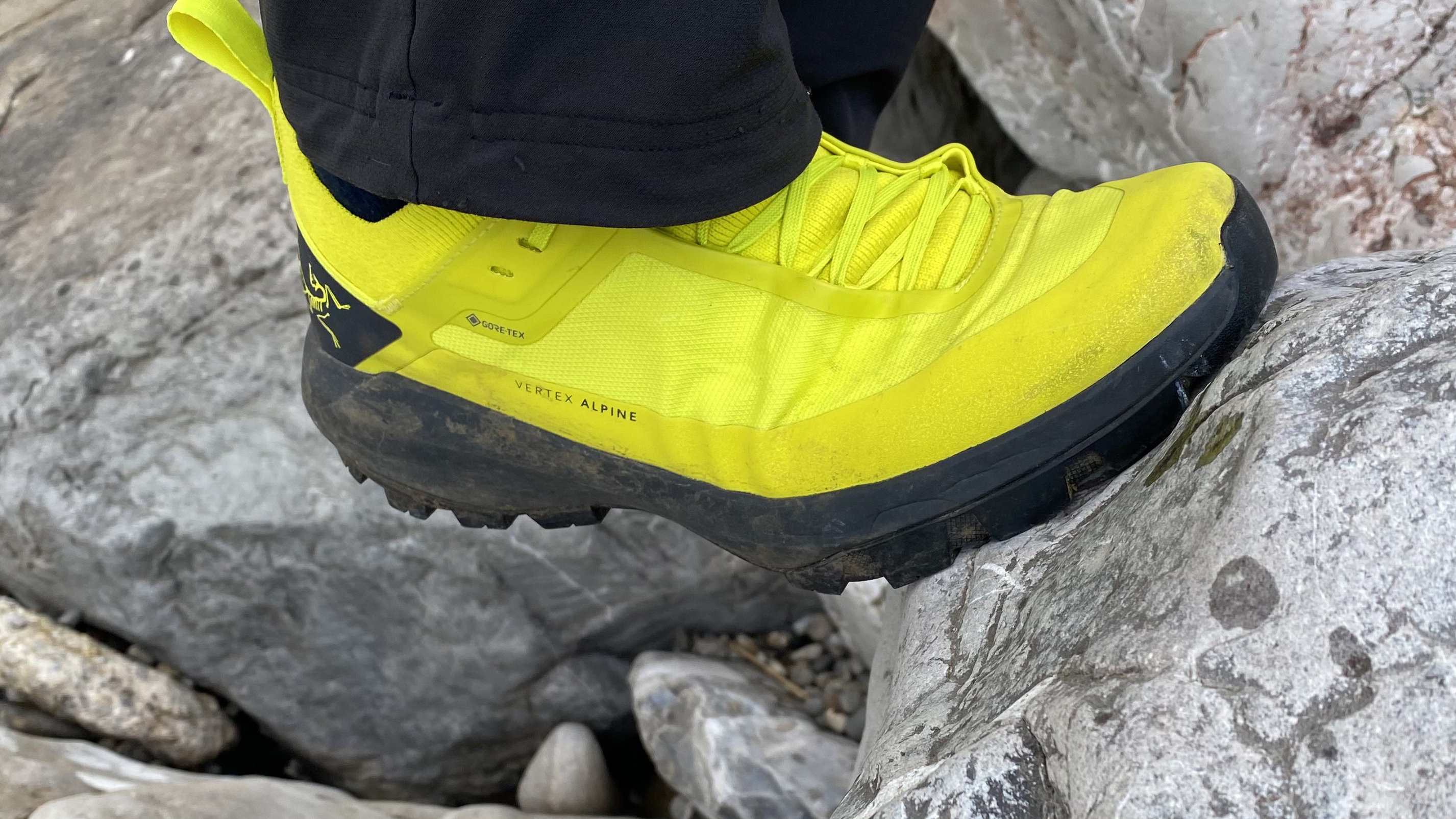
Specifications
Reasons to buy
Reasons to avoid
Available in a range of colorways, the Vertex Alpine GTX approach shoes are as stylish and sleek as they are functional and high-performing. A TPU shank immersed in the midsole supplies a really decent degree of rigidity along the length of the shoe, providing the right level of stiffness required when edging around rocks, tackling a technical scrambling adventure or climbing a via ferrata route. The upper, which is primarily made from a Cortura material (utilizing recycled PET bottles) is reinforced with TPU overlays and boasts a protective rand that goes almost completely around the shoe. The toecap is pretty small, but it does its job adequately, and the heel enjoys buffer-style protection from the back of the sole, which protrudes slightly beyond the natural footprint of the shoe – all of which means you can kick or backheel snowsteps without injuring your feet. The Vibram-made outsole is armed with 4mm lugs arranged to give you traction while ascending and confidence and braking control during descents.
The upper is encased in a Gore-Tex membrane, making the shoe waterproof, but the shoe is largely defined by a stretchy, knit-material sock inner, which is integrated with the chassis (replacing the tongue and extending right around the heel). This does a great job of keeping grit, sand, snow and other unwelcome items out of the shoe, and contributes to the confidence-bestowing secure hold it maintains on your feet, but it does make the Vertex Alpine GTX quite energy sapping and time consuming to put on (you certainly wouldn’t want to be pulling them on and off too often). They certainly won't suit those with wide feet or buntions, but overall, these alpine-orientated shoes are excellent for hill hikers, scramblers, crag baggers and peak climbers.
Read our full Arc’teryx Vertex Alpine GTX review
The best lightweight shoe
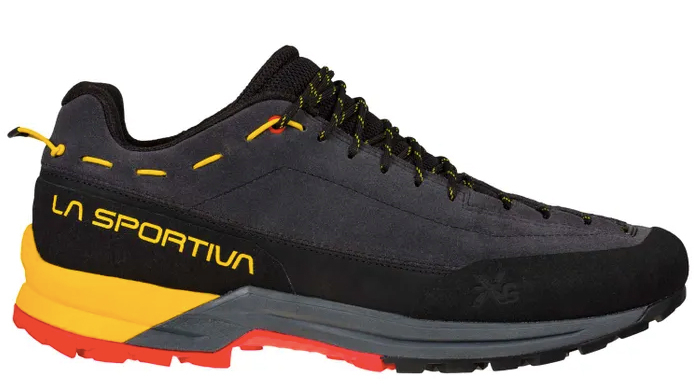
Specifications
Reasons to buy
Reasons to avoid
Combining the light feel and tight-fitting capability of a high-performance rock climbing shoe with the desired stiffness and extra protection of a decent approach shoe, the La Sportiva TX Guide Leather is proving a popular choice for outdoor users who care about weight.
Keen technical fans will note that the climbing-inspired protective edge is made of lightweight PU-TECH Lite material. Uneven and rocky terrain is easily tackled thanks to the double Eva midsole with shock-absorbing compression on the heel and stabilizer on the forefoot, also co-molded with a TPU layer that acts as a stabilizer at the climbing zone, medial shank and rock-guard layer on the forefoot. Similar to the Scarpa Crux, the TX Guides use Vibram MegaGrip but alongside an Idrogrip sole to provide both grip during climbing, and durability and confidence when you need to brake going downhill.
The TX Guides certainly pack a punch – and as an approach shoe that combines technology with low weight and high comfort, it's one of the best approach shoes for taking you in pursuit of those high-octane adventures.
The trainer’s soft high collar and padded liner keep you comfortable, but will you keep them clean and mud free? That depends on the adventures you take them on, but let’s face it, if you’re using them as intended, there’s zero chance of these boots staying super pristine for very long.
Read our full La Sportiva TX Guide Leather review
The best for technical scrambling
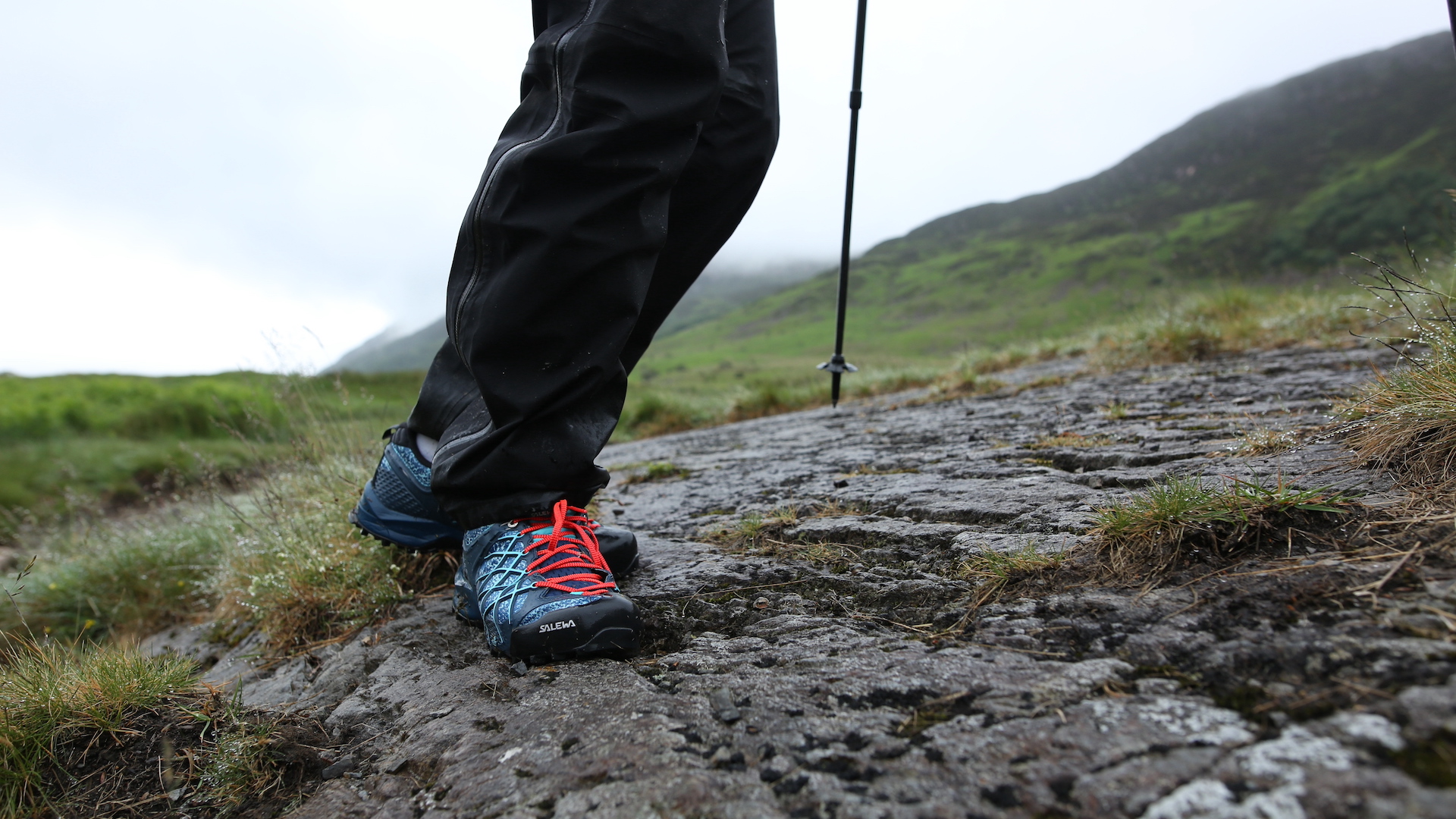
Specifications
Reasons to buy
Reasons to avoid
Salewa ooze alpine coolness, and the Wildfire blends traditional approach-shoe components with modern, climbing-shoe influenced design to result in a shoe built for agility and confidence on technical scrambling approaches and day walks (as opposed to long, arduous days out in scorching weather).
A dual-density compression-molded EVA midsole cushions your feet nicely on rugged trail surfaces. The breathable mesh upper and well-designed EXA shell over injected 3D Cage provide both protection, stretch and torsional stability for feet.
The Wildfire has a climbing zone at the toe, which ensures good edging performance – ideal in committing technical terrain. The Pomoca Butilic compound rubber outsole provides great grip on rock in both dry and wet conditions – supplying sure-footed climbing precision on technical mountain approaches, scrambles, traverses and climbs – while the aggressive tread lugs offer improved traction on mud and softer terrain.
The Gore-Tex lining provided sufficient waterproof and breathable protection, which meant my feet felt comfortable despite their narrow fit. Climbing lacing further supports the foot with a wrapping fit, especially at the forefoot and allows you to fine-tune the toe for greater precision in technical terrain.
Inside, the breathable OrthoLite footbed provides superior cushioning and wicks away moisture, helping to keep your feet cooler and drier. Best-suited for technical approaches when a B1 boot might be deemed overkill, the Wildfire is a full-featured approach shoe that has the technical design and performance to provide security to tackle the next ridge you walk along.
Read our full Salewa Wildfire Gore-Tex review
The best high performance shoe

Specifications
Reasons to buy
Reasons to avoid
If you're looking for the best approach shoes on the market right now, the Mammut Ultimate Pro Lows are definitely up there. These shoes provide some pretty distinctive comfort-focused features in the form of a lightweight padded tongue, foam cushioning and lightweight, round laces.
A hybrid shell and protective rubber border combines sneaker-like comfort with the durability of a traditional approach shoe, yet the Ultimate Pro Lows have none of the bulk and awkwardness of a chunky shoe.
Having worn these shoes over a long testing period, they also felt one of the most comfortable thanks to the shoes’ TPU support elements in the center of the midsole area, which provides support over the longitudinal arch of the foot while increasing sure-footedness, comfort and reducing fatigue.
Finally, for people with feet that have a tendency to pronate, the Ultimate Pro Low GTX differ from super rigid approach shoes by incorporating a patented Mammut sole concept that allows the foot to naturally roll, rather than preventing any foot movement, thus reducing overall fatigue and the danger of twisting ankles.
The Gripex outsole technology also copes with tricky rocky conditions, from scrambling up the side of a coastal mountain to downclimbing to an abseil station. It’s clear the features have been designed for the outdoor user who doesn’t want to swap shoes between their activities – this is a high-performance shoe that’s lightweight and comfortable. A great all-rounder.
Read our full Mammut Ultimate Pro Low GTX review
The best for breathability

Specifications
Reasons to buy
Reasons to avoid
Putting comfort and grip at the heart of the design, these are reliable shoes that combine innovative features with laces that bind over the arch of the foot, using an evenly distributed system to ensure the pressure isn’t just focused on the lacing near the top of the foot and can be easily adjusted without having to dig your fingernails in.
Webbing ‘grabs’ the lacing, meaning the laces also last for longer and ensure a tight, snug fit. The Black Diamond mission LTs are many people’s go to approach shoes thanks to the Black Mountain rubber offering high performance grip.
A highly breathable chassis is made with Black Diamond’s signature EnduroKnit, which is a one-piece, ultra-breathable upper for lasting temperature regulation that’s hyper-durable for season after season of abuse. A tuned EVA midsole provides ample stiffness for technical precision, while remaining comfortable. The nylon rock plate provides extra protection.
Read our full Black Diamond Mission LT review
The best for grip
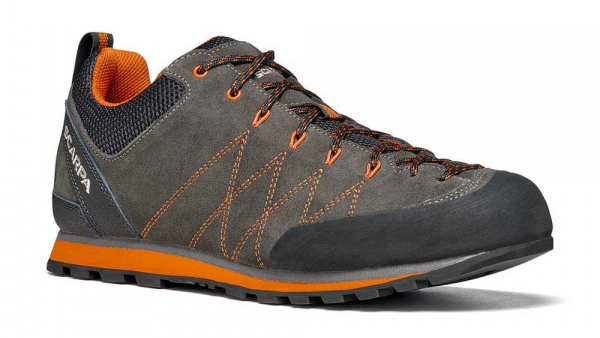
Specifications
Reasons to buy
Reasons to avoid
Nimbly walking the line between high performance and extreme comfort, the Scarpa Crux Women’s approach shoe offers stability, protection, grip and a snug fit in roughly equal measure, although the scales are tipped slightly in favor of grip. The combination of two rubber materials in the outer sole adds muscle to the grip, and it’s worth noting these approach shoes use the Vibram Megagrip outsole, the stickiest of all the Vibram rubber compounds, making them perfect for technical scrambling.
The folks at Scarpa have made sure to design the Crux to cope with covering a range of uneven terrain. ACTIV impact technology at a construction level ensures the materials are able to absorb the negative impact of groundshock to avoid placing greater stress on the lower limbs, while a full rubber rand around the toe which gives excellent grip as well as protection and durability against scuffs and confidence to trust the shoe to perform in scenarios which require precise footwork.
Lastly, Scarpa’s technologies include eco considerations in their choice of processes and materials, specifically chosen because they have been deemed environmentally friendly.
Read our full Scarpa Crux review
The original approach shoes – the Five Ten ‘Tennies’ – are back (now owned by Adidas) and they’ve danced into the room in dazzling display of colors. For dirtbags who like their approach shoes as relaxed as their outlook, these are comfortable, wide-footbed approach shoes that feel almost slipper-like, meaning they are perfect for running in and out of the van, and messing about below the crag.
Having evolved into a multi-functional shoe, Five Ten ‘Tennies’ are now seen on mountain-biking tracks and forest trails, as well as on the feet of people walking in to sample some gritstone.
They’re easy to slip on and off, thanks to the elasticated cuff at the top of the foot, with a padded tongue. The laces are flat and chunky, meaning they hold well and are easily adjusted, thanks to the eyelets that hold the shoe well. A rubber rand, typical of the Tennies, help with the shoes’ overall resistance to scuffs to rough terrain.
Tennies have evolved plenty over time, and while it can be easy to dismiss them in favor of more ‘technical’ approach shoes now available, they still pack in a lot of features. The high-friction Stealth S1 rubber outsole, for example, provides unbeatable grip in wet or dry conditions, and supplies security when walking across dry rocky terrain, whether it be a quartzite boulder or a rocky strewn path.
Whilst they are up against La Sportiva and Salewa shoes designed more for high-octane adventures than the more casual lifestyle the Tennies were conceived to facilitate, these iconic shoes still have a place as a single pitch, easy-going comfortable approach shoe, and will continue to have a firm following.
Read our full Adidas Five Ten Tennies review
The best for protection
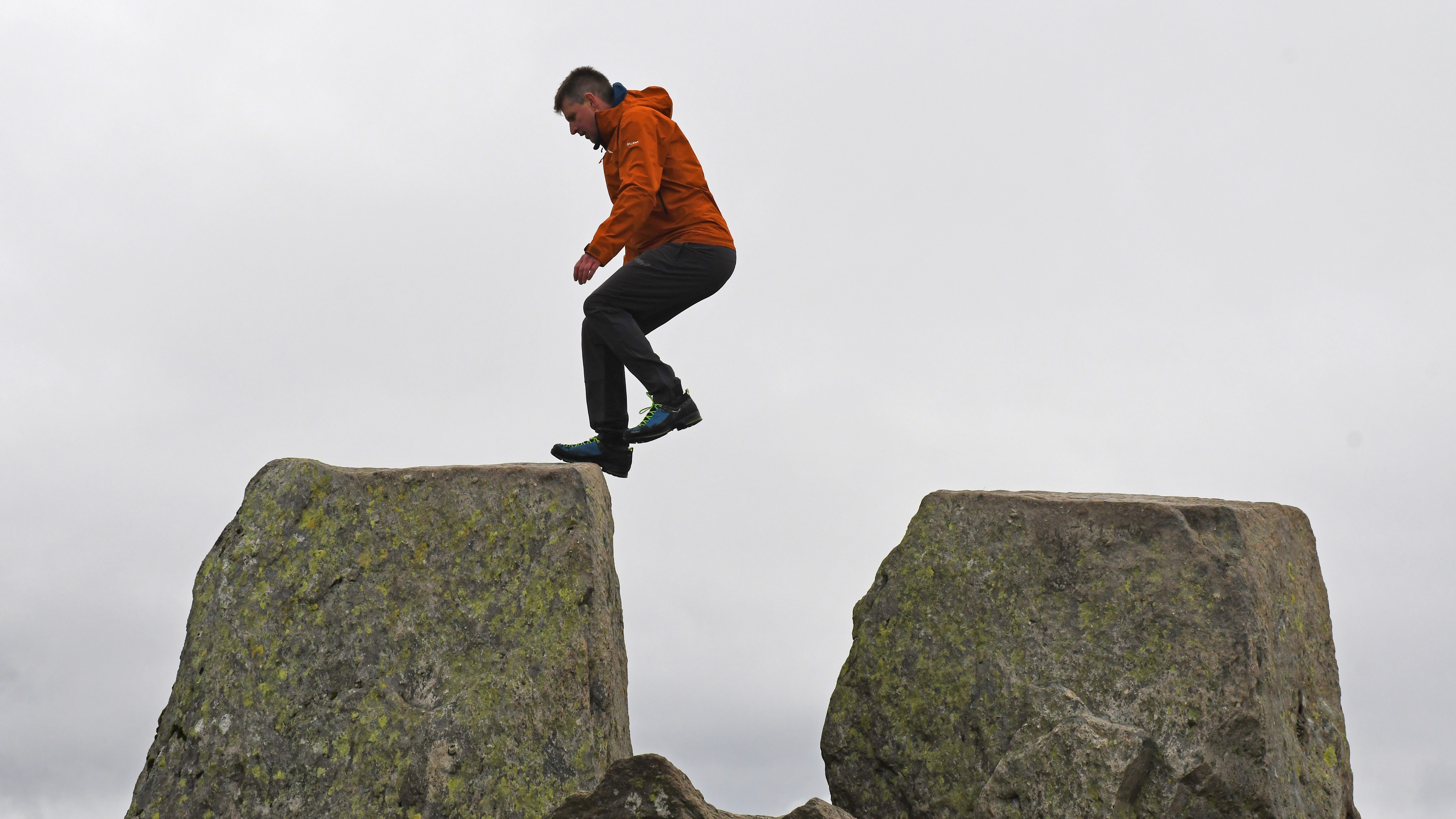
Specifications
Reasons to buy
Reasons to avoid
This ‘mountain trainer’ from the Italian alpine experts Salewa is a classic approach shoe, offering everything you need in footwear designed to get you along rocky routes leading to the base of climbing crags, or for use on technical scrambling adventures. There is an excellent level of rigidity along the full shank of the shoe, which is perfect for edging around rocks and tackling scrambles.
The full 360-degree wrap-around protective rand is really good for keeping your feet safe and secure in challenging terrain, and the super substantial toe-cap not only protects your pinkies from stubbing and crushing injuries, it also means you can kick snow steps into the ice without breaking toes or blackening nails. A thin steel cable runs from the top lace eye around the back of the heel – this is Salewa’s own ‘3F system’, designed to connect the instep area with the sole and heel for improved levels of support and flexibility. They certainly not the lightest approach shoe out there, but that is a payoff for the comprehensive degree of protection they offer.
The midsole offers reasonable levels of cushioning, while the Ortholite footbed helps with comfort. The grip on the Vibram outsole is excellent, with pronounced but intelligently spaced lugs that don’t collect too much mud. The sole even has a special tread zone for climbing via ferrata. The Gore-Tex membrane provides breathable wet weather protection, and these shoes work best outside of summer (they can feel hot and heavy in mid summer). Our only other complaints are that the non-integrated tongue can let in grit, and the laces themselves are a bit of a weak point (easy to replace, but hard to find in the funky colors they originally come in).
Read our full Salewa Mountain Trainer 2 Gore-Tex review
The best for dry conditions

Specifications
Reasons to buy
Reasons to avoid
Precise, durable, and comfortable, the Technician Leather shoe boasts super sticky rubber for the most gruelling approaches and descents. It hugs the foot, minimising hot spots with its comfortable heels, and the evenly distributed lugs provide grip – especially when smearing up slabs. The lightweight half bootie/tongue has a slipper-like feel and makes the shoe super easy to put on and take off, without having to crush the back of your heel. With a graduated fit system, and use of leather across the shoe, these shoes have a premium quality feel. They’re well-designed, and technically capable for demanding days out where fit is so critical for a successful adventure. Used as they’re intended, these approach shoes are everything you need to be able to get yourself down from committing, rocky multipitch climbs.
Read our full review of the Black Diamond Technician Leather approach shoes
Approach shoes comparison table
Approach shoe | RRP | Weight (per shoe) | Style | Compatibility |
AKU Rock DFS GTX | $180 (US) / £180 (UK) / €185.90 (EU) | 400g / 14.1oz (men's mid): 300g / 10.6oz (women's low) | Approach shoe / hiking shoe hybrid | Hiking, easy climbing, scrambling, fastpacking, via ferrata |
Arc’teryx Vertex Alpine GTX | $250 (US) / £220 (UK) | 336g / 12oz | Approach shoe | Approach routes, scrambling, alpine climbing & technical hill hiking |
La Sportiva TX Guide Leather | $150 (US) / £140 (UK) / €185.90 (EU) | 387g / 13.65oz (men's): 330g / 11.6oz (women's) | Lightweight approach shoe | Hiking, climbing, scrambling, fastpacking |
Salewa Wildfire Gore-Tex Shoes | $170 (US) / £160 (UK) / €170 (EU) | 395g / 14oz (men's) : 345g / 12oz (women's) | Stiff-soled approach shoe | Technical approach |
Mammut Ultimate Pro Low GTX | $149 (US) / £140 (UK) | 150g / 5.3oz | Ultralight, sneaker style approach shoe | Approach, hiking and climbing |
Black Diamond Mission LT approach shoes | $140 (US) / £103 (UK) | 312g / 11oz | Dry weather approach shoe | Approach, walking, climbing, lifestyle |
Scarpa Crux approach shoes | $130 (US) / £120 (UK) | 370g / 13.05oz | Comfortable approach shoe | Technical approaches, scrambling, hiking |
Salewa Mountain Trainer II | $229.95 (US) / £190 (UK) | 458g / 16oz | Classic approach shoe | Approach routes, scrambling and hiking |
Black Diamond Technician Leather | $144.95 (US) / £125 (UK) | 340g / 12oz | Versatile approach shoe | Approach, scrambling, walking |
How to choose an approach shoe
Working out how to choose the best approach shoes for you is a fairly involved process, but only because the range is so rich and personal preference is such a big factor.
Of course, what constitutes the best approach shoe depends on whether you're planning on using them just for walk-ins to the crag, or as general all-purpose trail walking shoes or the best trail running shoes too.
Versatility
Ask yourself how much you would like your shoes to do – do they need to be versatile enough to use across a range of activities, from day-to-day wear, to hillwalking and technical, rocky scrambling. Depending on their features, approach shoes can take on a range of applications.
Are you a hiker who enjoys to take on rocky scrambles? Then you may need approach shoes that give you ankle support and waterproofing. If summer trad climbing is your thing, you may not need to splash out on a pair designed with GORE-TEX and big lugs for muddy trails. Instead, you'll be after something with a stiffer sole for those technical approaches.
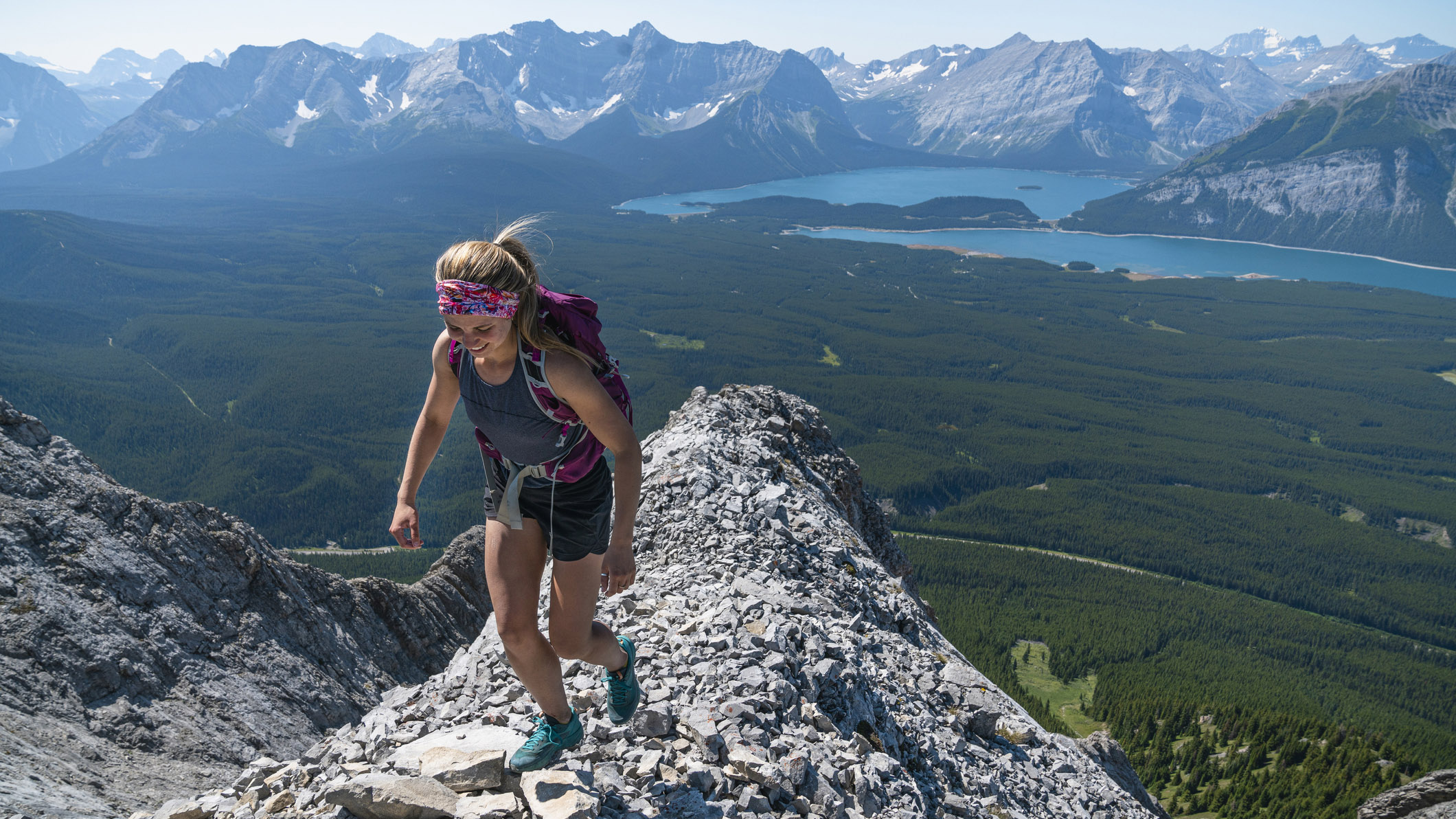
Support, rigidity and weight
Approach shoes generally don't offer as much ankle protection as a hiking boot, but many such shoes provide a greater range of rigidity to allow the ankle to move with the terrain, preventing over-pronation.
For those who enjoy technical scrambling, a stiffer sole might suit you best, while people who are aiming to go fast and light may prefer a more trainer-like feel to their approach shoe.
Protection
If you are intending to do a lot scrambling and ascents that involve edging, then good toe and heel protection is every bit as important as rigidity, and it’s worth paying a weight penalty to have all of these features. The ability to keep your feet dry is good, so a breathable waterproof membrane like GORE-TEX is a massive bonus.
Many approach shoes have a rubber rand that protects the foot from abrasion against the rocks. This is music to those who enjoy an afternoon of easy sport climbing.
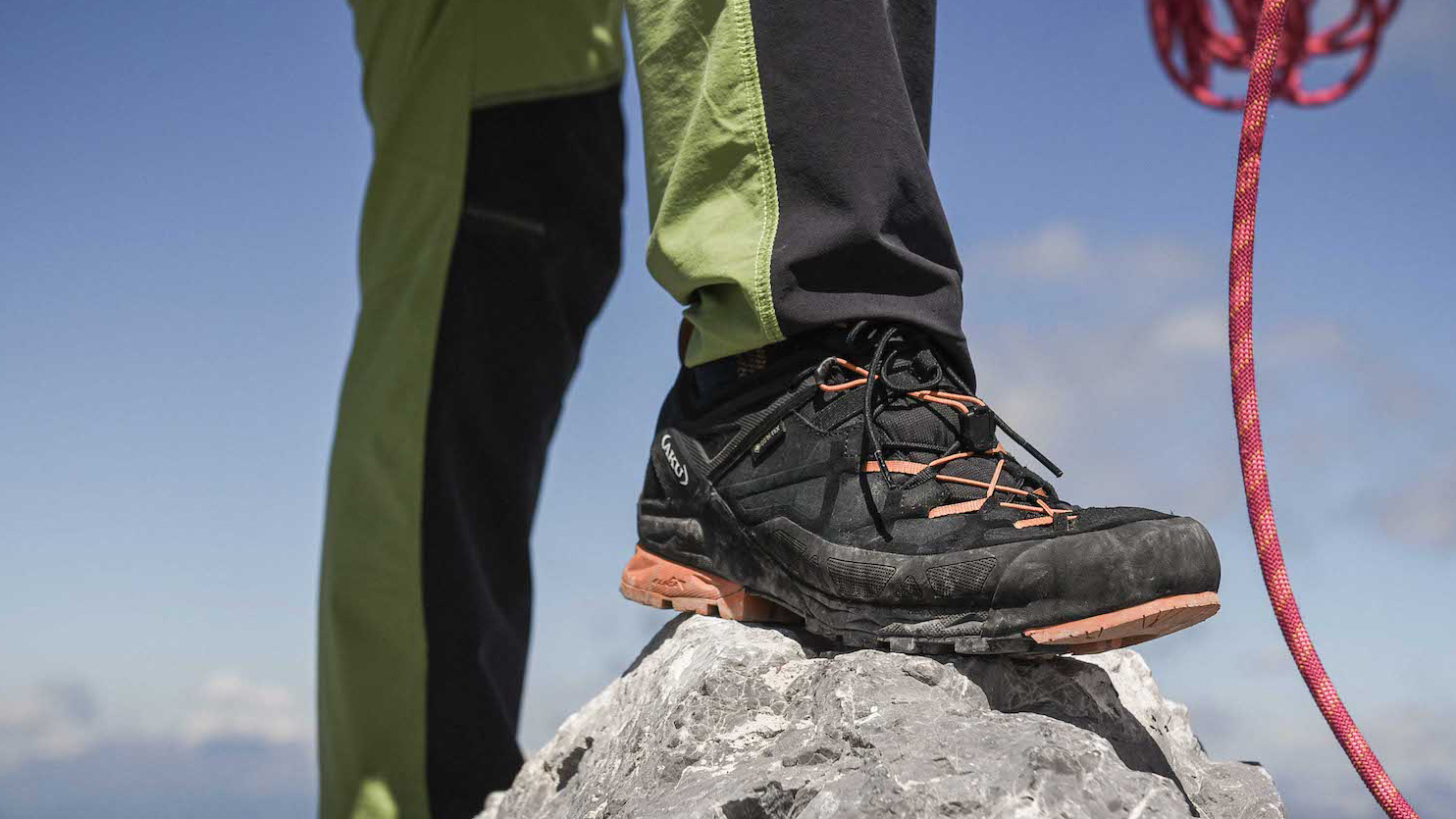
Grip
If your local trails are steep, rocky and often wet, then prioritising a shoe with good lugs that offers great grip is an excellent idea. If you’re going to be doing a bit of running enroute to your nearest trails, perhaps choose a shoe with a slightly less aggressive outsole, that can cope well with a wide variety of surfaces in a mixture of wet and dry conditions.
Gender
Just as with the best women's climbing shoes, approach shoes after often gender specific. Women's approach shoes tend to be lighter than their male equivalents and are often shaped with the female plantar anatomy in mind.
Advnture Newsletter
All the latest inspiration, tips and guides to help you plan your next Advnture!
Alex is a freelance adventure writer and mountain leader with an insatiable passion for the mountains. A Cumbrian born and bred, his native English Lake District has a special place in his heart, though he is at least equally happy in North Wales, the Scottish Highlands or the European Alps. Through his hiking, mountaineering, climbing and trail running adventures, Alex aims to inspire others to get outdoors. He's the former President of the London Mountaineering Club, is training to become a winter mountain leader, looking to finally finish bagging all the Wainwright fells of the Lake District and is always keen to head to the 4,000-meter peaks of the Alps. www.alexfoxfield.com
